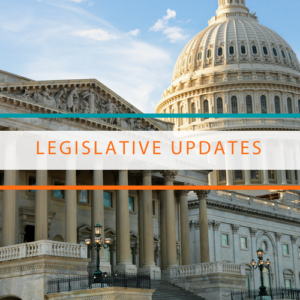The last two weeks, lawmakers in Congress have remained in recess ahead of the upcoming midterm elections set to take place November 8. Meanwhile, the U.S. Department of Education (ED) released new CTE data while the agency finalized new rules for postsecondary education.
 Congress Focuses on Midterms, Will Return Next Month
Congress Focuses on Midterms, Will Return Next Month
Both the Senate and House are currently only holding pro forma sessions until after the fast-approaching midterm elections take place on November 8. Lawmakers will return to Washington, D.C. to resume debate regarding the federal fiscal year 2023 (FY23) appropriations process and other year-end priorities on November 14 as part of the “lame duck” session of the current 117th Congress. Advance CTE expects this year-end session to continue until December 16 when temporary federal funding legislation is scheduled to expire and could extend as far as December 24 before adjourning.
ED Releases New CAR Report Data
This week the U.S. Department of Education’s Office of Career, Technical, and Adult Education (OCTAE) published performance and enrollment data from states’ Consolidated Annual Report (CAR) submissions as part of the Carl D. Perkins Career and Technical Education Act (Perkins V). These data reflect learner performance during the 2020-21 program year and represents the first year that state performance data has been published under Perkins V since its reauthorization in 2018. Notably, these data make use of Perkins V’s new concentrator and participant definitions and also include new secondary CTE program quality indicators introduced by the legislation among several other changes.
The data indicate a slight uptick in CTE enrollments, with 12 million CTE participants across the nation, including 8.3 million at the secondary level and 3.5 million at the postsecondary level. In addition, CTE concentrators had a graduation rate of 96 percent– substantially higher than the national average for all learners . The full set of data can be found here. Advance CTE is continuing to analyze and evaluate these data for other important trends and findings and will share those with the broader CTE community in the future.
ED Publishes New Postsecondary Rules
Yesterday, the U.S. Department of Education finalized a new set of postsecondary rules intended to restrict proprietary school access to federal student aid and expand access to these funds for incarcerated learners. This final set of regulations was developed as part of a negotiated rulemaking panel tasked with finding consensus on these and several other issues of importance to postsecondary education. The first regulation– known informally as the 90/10 rule–stipulates that for-profit institutions cannot derive more than 90 percent of their revenue from federal sources. This new rule further limits what funding “counts” towards this calculation. The second rule focuses on whether and how for-profit institutions can convert to nonprofit status (known as change in ownership). The third and final major component of this rules package expands Pell grant program eligibility to include justice-connected learners.
These new regulatory changes are set to go into effect July 2023. The full announcement can be found here.
Nation’s Report Card Shows National Drop in Academic Achievement
On Monday, October 24, the U.S. Department of Education’s National Center for Education Statistics (NCES) published results from the National Assessment of Education Progress (NAEP). Known informally as the nation’s report card, the NAEP is a nationally representative assessment that measures learner academic achievement in grades 4 and 8 in core academic subjects such as reading, math, science and other fields of study. The results released this week illustrate troubling trends in learner scores in math and reading between 2019 and 2022, with the majority of states reporting a decline in learner achievement in these subject areas for learners at both grade levels and across socio-economic and other learner subpopulations.
Reacting to the NAEP results, U.S. Secretary of Education Miguel Cardona said, in part, “The results released today from the National Assessment of Educational Progress are appalling, unacceptable, and a reminder of the impact that this pandemic has had on our learners. The data also represent a call to action for the important work we must do now for our students—especially those who have suffered the most during the pandemic.”
Department of Energy Unveils School Infrastructure Grants
On Wednesday, October 26, the U.S. Department of Energy (DOE) announced $80 million in new funding availability to support K-12 schools in making needed infrastructure upgrades and related improvements. The funding was authorized as part of last year’s American Rescue Plan which authorized a “Renew America’s Schools” program and allotted $500 million for similar activities. K-12 schools, charter school boards and local education agencies can all apply for this first tranche of funding ahead of a January 2023 application deadline. More information on the program can be found here.
Steve Voytek, Policy Advisor
